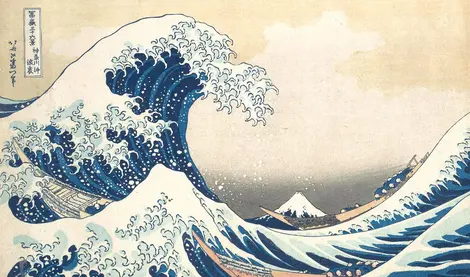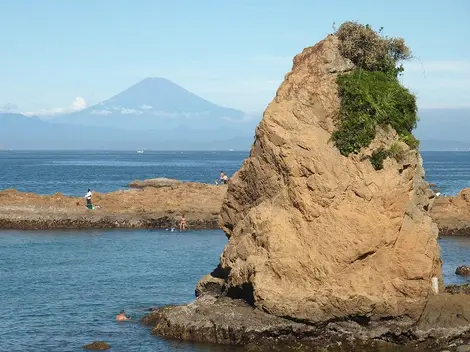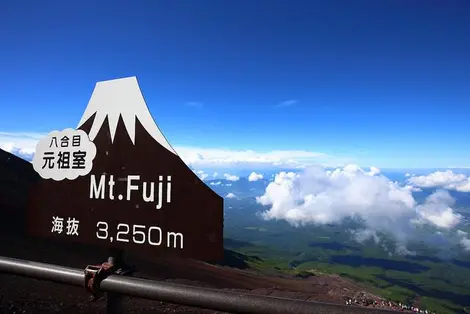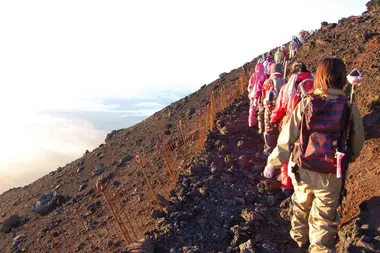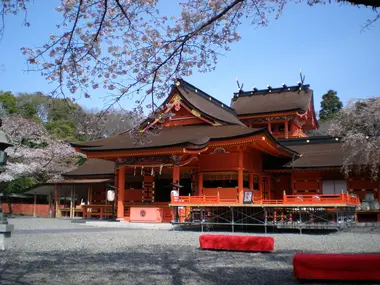7 anecdotes about Mount Fuji 富士山の逸話
- Published on : 29/04/2020
- by : S.R.
- Youtube
Mount Fuji, the little story of the symbol of Japan
Mount Fuji is THE most famous mountain in Japan, its particular appearance of an isolated mountain with symmetrical coasts and a snow-capped crater has made it an emblematic place of the archipelago. Known and appreciated by all, yet the mystery remains...
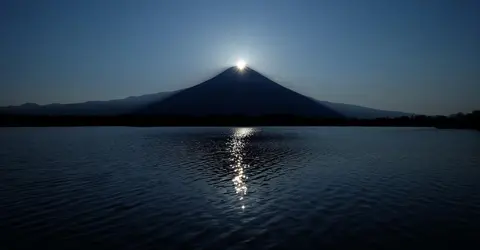
Diamond Fuji
Flickr Jamin96
1 - Mount Fuji is made up of 3 volcanoes
Although Mount Fuji appears to us as a single mountain, it is made up of three successive volcanoes. In fact, at the base of Mount Fuji, we find the Komitake volcano, whose first eruptions could have taken place nearly 600,000 years ago. The "ko-fuji" or "old Fuji" was further overlayed approximately 100,000 years ago, forming the "shin-fuji" or "new-fuji" 10,000 years ago to give the mountain its current form.
- Read also: Japanese volcanoes
2 - Until 1872, climbing was prohibited for women
Mount Fuji has been considered a sacred mountain by Shintoism since the seventeenth century, and its ascent is considered a path of purification for Buddhists. Traditionally for these two religions, women were considered stained with impurity due to menstruation, which led the authorities to forbid them of ascension.
A Buddhist temple, "Nyonin-do" was constructed for women to wait while the men of the family ascended the mountain. A few years later in 1867, a foreigner and a woman, Fanny Parkes (travel journalist from Wales), completed the ascent. The event was a major catalyst for the government to lift the ban for good in 1872, opening Mount Fuji to all women.
3 - The last volcanic eruption of Mount Fuji dates back from 1707
Mount Fuji is an active volcano with a bubbling interior life - 16 eruptions in all since 781. The last eruption was recorded on December 1707, some 49 days after the Hoei-era earthquake, the most powerful earthquake in the country's history after that of Tohoku in 2011, blowing ashes to as far as Edo. Mount Fuji has remained calm since but remains volatile reminding the people of its destructive capability.
4 - The highest lavatory in Japan is at the top of Mount Fuji
The summit of Mount Fuji hosts the highest restroom in Japan, next to the highest post office! Culminating at over 3,700 meters, it's also the tallest paid restroom in the country, so don't forget to carry some change in your pocket in case nature calls!
5 - Mount Fuji is the most climbed mountain in the world
Although the official Mount Fuji climbing season lasts just over two months, the mountain is the most climbed in the world! It welcomes nearly 300,000 climbers annually, a figure much higher than that of Mount Monadnock in the United States, the second most traveled mountain with approximately 125,000 people per year. Its unique character, proximity to a city of 13 million such as Tokyo, and its accessibility and hospitality remain a draw to mountaineers and casual climbers across the world.
6 - The first known ascent dates from 663
The first known ascent of Mount Fuji is said to date back to 663 by the Buddhist monk En no Gyoja, considered to be the founder of the syncretic shugendo sect which mixes religious aspects of Buddhism, Taoism, Shinto, and Shamanism. According to legend, the monk ascended the mountain to escape exile... was eventually banished to the island of Izu Oshima in 699.
- Related articles : Mount Fuji, up to the 5th station
7 - The summit of Mount Fuji was acquired by a temple
The top of a mountain is private property! This astonishing statement is still true as The Fujisan Hongu Sengen-Taisha Shinto shrine, located in the city of Fujinomiya at the foot of Mount Fuji. The area was acquired from Ieyasu Tokugawa to whom the mountain belonged in 606. Thus, all the land between the 8th station and the summit is considered to be the property of the shrine.
- Read also: Fujinomiya





